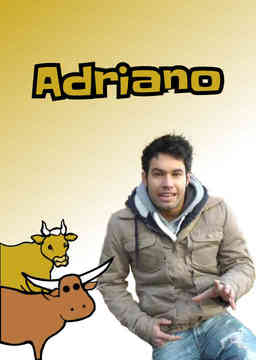









Difficulty:
 Advanced
Advanced
Italy
Massimo Montanari, an expert in historical food studies, discusses the role of women in the development of regional cooking.
Difficulty:
 Advanced
Advanced
Italy Milanese
Marchesi shows us a delicious dessert made from leftover panettone. Panettone is an Italian fruitcake from the Lombardy region that is traditionally served during the Christmas season. Cinepanettoni are comic movies served up during the holidays.
Difficulty:
 Beginner
Beginner
Italy Tuscan
Lisetta and Alessio show us how they like to taste their new, freshly pressed olive oil. Since oil can be used uncooked to dress salads, or used as cooking oil, they call the uncooked oil olio crudo (raw oil).
Difficulty:
 Advanced
Advanced
Italy
Artist Nanda Vigo, a friend of Gualtiero Marchesi's, tells us what it was like to be an artist back in those days, and how Marchesi was involved.
Difficulty:
 Intermediate
Intermediate
Italy
From Puglia, a description of olive picking the modern way, and some of the rules agricultural business are required to follow, in order to obtain top quality extra virgin olive oil.
Difficulty:
 Beginner
Beginner
Italy Tuscan
From the heart of Tuscany, famous for its olive oil, Tuscans Lisetta and Alessio talk about how olive oil is made.
Difficulty:
 Advanced
Advanced
Italy
One thing that was special about Marchesi's cuisine was that rather than looking abroad for exotic ingredients, his dishes were works of art made with local, ordinary materials.
Difficulty:
 Advanced
Advanced
Italy
Marchesi's friends provide details about their long-term relationships with the celebrated chef.
Difficulty:
 Advanced
Advanced
Italy
Marchesi had plenty of artist friends, and that meant late nights, while having a restaurant meant getting up at the crack of dawn to go to the market. How did he do it?
Difficulty:
 Advanced
Advanced
Italy
Marchesi talks about how important his travels in Europe and in Asia had been in enriching his menu, and confirming the path he was following.
Difficulty:
 Intermediate
Intermediate
Italy
We've finally reached the last part of this recipe. Now you can make this dish yourself. Don't forget to pre-heat the oven to two hundred and twenty or two hundred and forty degrees (428-464°F). If you happen to have any leftover afterwards, you can safely freeze it. Buon appetito!
Difficulty:
 Intermediate
Intermediate
Italy
It's time to check the eggplant in the oven. And what about the slices that were a bit too sottili (thin)? Will they have burned? Note that English mostly uses eggplant as a collective noun (in the singular) but Italian, unless referring specifically to a single eggplant, uses the plural le melanzane when referring to eggplant in general, and to the slices themselves.
Difficulty:
 Intermediate
Intermediate
Italy
Marika prepares the eggplant slices by baking them in the oven—a much lighter way of preparing the eggplant layers than the traditional frying method.
Difficulty:
 Advanced
Advanced
Italy
Giovanni Ballarini talks about what the kitchens of Italian restaurants were like in the fifties and sixties. To make sense of how he describes them, see Yabla lesson Parole Alterate - Modifying Words to Create New Ones, as well as video lesson Marika spiega: Parole alterate. Gianni Mura talks about some of the trends found on restaurant menus today.
Difficulty:
 Advanced
Advanced
Italy
Marchesi's friends and clients talk about Milan in the 1980s and how the fashion business helped it become such a cosmopolitan city. Reference is made to Florence's "Sala Bianca," [White Hall] in the Pitti Palace, where fashion shows took place before Milan became synonymous with high fashion.
Are you sure you want to delete this comment? You will not be able to recover it.